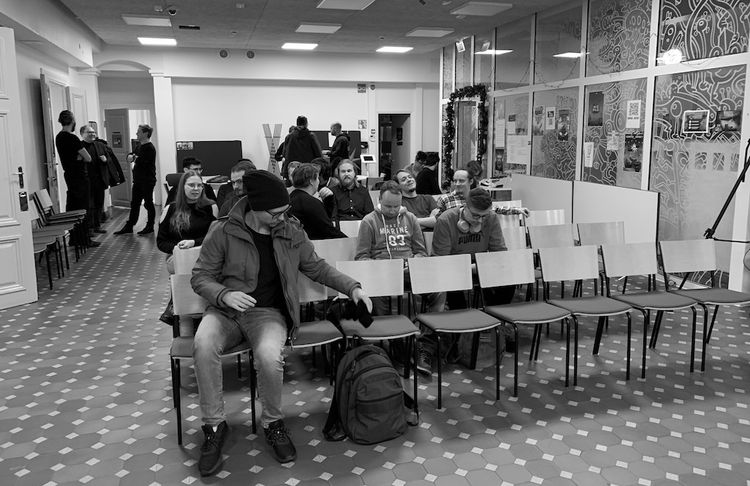EGD News #125 — Startup Advisors

Sent on March 11th, 2022.
If you aren’t a subscriber to EGD News, you can subscribe here.

I’ve been thinking about startup advisors and how to hire them. I’ve previously written about advisors, but I wanted to return to this topic.
Many founders bring on advisors, giving them 0.5% to 2% of the company, but those advisors end up doing nothing for the company to move the needle in the long run. They might have a catch-up call once a month, but often, there are no clearly defined deliverables.
Many realize later that it wasn’t a good fit or that they can’t justify the reasons anymore for giving 2% to this advisor. But it’s tough to go out and “fire” people, especially since you didn’t have any agreements on termination, let alone vesting on the advisor shares.
It just gets messy as hell, and so many founders are experiencing the headache of having advisors on their cap table, individuals who are contributing zero to the company’s success. It starts to hurt even more when you go out and hire an exec, and you can only give them a fraction of what the advisor owns.
Last year, I asked myself: There’s got to be ways to make things better for the founders, the advisors, and all the current and future shareholders.
Here’s what I’ve seen that works and guarantees safety and security for the founders.
1. FAST agreement
Many founders sell shares and grant stock options to advisors without any paperwork. The best tool I’ve come across is the FAST agreement. This document has two aspects that make it the best tool for founders hiring advisors.
First, it defines the equity that the advisor gets, based on the stage of the company and the advisor’s experience.
Not just that, it defines the vesting schedule for the advisors’ shares and the termination clauses. If the advisor isn’t performing, you want to have those safety mechanisms in place, and you can retain much of the equity.
Second, the FAST agreement lets the founders define clear deliverables the advisor needs to deliver. This might sound like a hard thing to describe, but it’s something you’ll want to express clearly so that both parties have an understanding of why this advisory role makes sense.
Examples of deliverables:
- Help us raise a seed round by introducing us to more than four investors, helping us to make the pitch deck and helping with investor negotiations.
- Have bi-weekly catch up calls or face-to-face meetings where we troubleshoot and ask for help.
- Help us with hiring whenever requested.
It’s good to have several deliverables since the relationship with the advisor will last for years, not just for one single instance or time frame.
2. Advisory board 2.0
Instead of giving out shares or options directly, I would be keen to explore a pool option. In this model, you set up an advisor option pool, i.e., 2% of the company. Give 2% from that pool when signing up an advisor, which means 0.04% of the company.
The pool model builds ways to incentive the advisors in the long run. Give more options
- When advisors execute, and there are tangible deliverables from their work, you renew their advisor role
- 6 months, if renewed, they get 1% more of the pool. Someone who has been renewed for four years will have accumulated 10% of the pool, meaning 0.2% of the company, depending on dilution.
- As the company graduates to a new stage, increase the pool by one percent of company shares. But continue giving 1% of the pool at sign-up.
Why does this work? You have a system for advisors that don’t compare their ownership to all shareholders but towards other advisors.
The only way to make this work? Founders need to be active at utilizing their advisors. If you put effort into thinking about projects for an advisor, but they can’t seem to find ways to help you, don’t renew the role for them.
3. Don’t bring on advisors, instead get them to angel invest
When I got into helping startups in 2019, I spent time with founders, and I was open to advisor roles. But now, in 2022, I would never take an advisory role.
Here’s why:
I noticed that I behave differently when I own a part of the company through investment. I’m less worried about my performance and can go about helping the company any way I can.
As an advisor, I’d need to worry about how the founders feel about my “performance.” But as an investor, I’ve already taken the chance on the founders with an investment, and they aren’t paying me anything.
I’ve gotten 0.2%-1% of the company, but now it’s more from the position of me paying the company to help them succeed. Even 1,000 USD invested is better than nothing.
4. Never pay with equity if you can pay with cash
To summarize, experienced and hard-working advisors can help founders in a significant way. I have seen advisors who operate like mentors to these founders and have a life-changing impact on them.
That being said, founders have to be careful about the promises from advisors. You might think you’ll have everything sorted once the advisor is involved, but then to discover that, you’ll actually need to do all the heavy lifting.
(Photo by Aedrian on Unsplash)
Get my book, “Long Term Game: How to build a video games company” from Amazon. Available on Kindle, audiobook, and paperback. Check it out!
Alexander Krug and Andre Krug — Success in instant games
In this podcast episode, I’m talking with Alexander Krug and Andre Krug, the co-founders of SOFTGAMES, an instant games company from Berlin, Germany. In this episode, we talk about the founder’s journey from a small startup to having 100 people in your company, what instant games look like in 2022 and where the founders see their company going next.
Listen to the full episode by going here.
Useful startups templates
- Non-disclosure Agreement
- Investor update template
- Teaser deck template
- Premium PC game sales projections template
- Stock option allocations
- Cap table template
- Co-founder equity split template
- and more
Articles worth reading
+ What it really means to transition from web2 to web3 games — “I’ve had conversations with founders who are transitioning into the web3 space recently, many of whom come with lots of experience in the traditional gaming space. Based on these conversations as well as observations on what various studios are doing, I would like to share my perspective of what the transition from web2 to web3 gaming really looks like.”
+ How to soft launch a mobile game in 2022? — “In my humble opinion, the most important part of game development. Market research is the process of looking at the game market through numbers, facts and opinions. It’s about finding the equilibrium between what the audience wants, what your teams want to build and what your teams actually can build, scale and operate. This step will give you some ideas about what you can expect while making and operating your game. Thorough market research should also help you to identify the challenges you’ll face in production and marketing allowing you to mitigate them in advance.”
+ Game Industry M&A in 2022 and Beyond — “After a 5-year bull run in M&A last year by the likes of Chris Petrovic during his run at Zynga and other companies like Stillfront, Embracer, and MTG, it certainly felt as if a change were in the air. Investor expectations demand growth. To feed the beast of growth, M&A would continue. However, how many more targets were left?”
Quote that I’ve been thinking about
“We desire what others desire because we imitate their desires.”
— Rene Girard
Sponsored by Audiomob

If you’re enjoying EGD News, I’d love it if you shared it with a friend or two. You can send them here to sign up. I try to make it one of the best emails you get each week, and I hope you’re enjoying it.
I hope you have a great weekend!
Joakim





